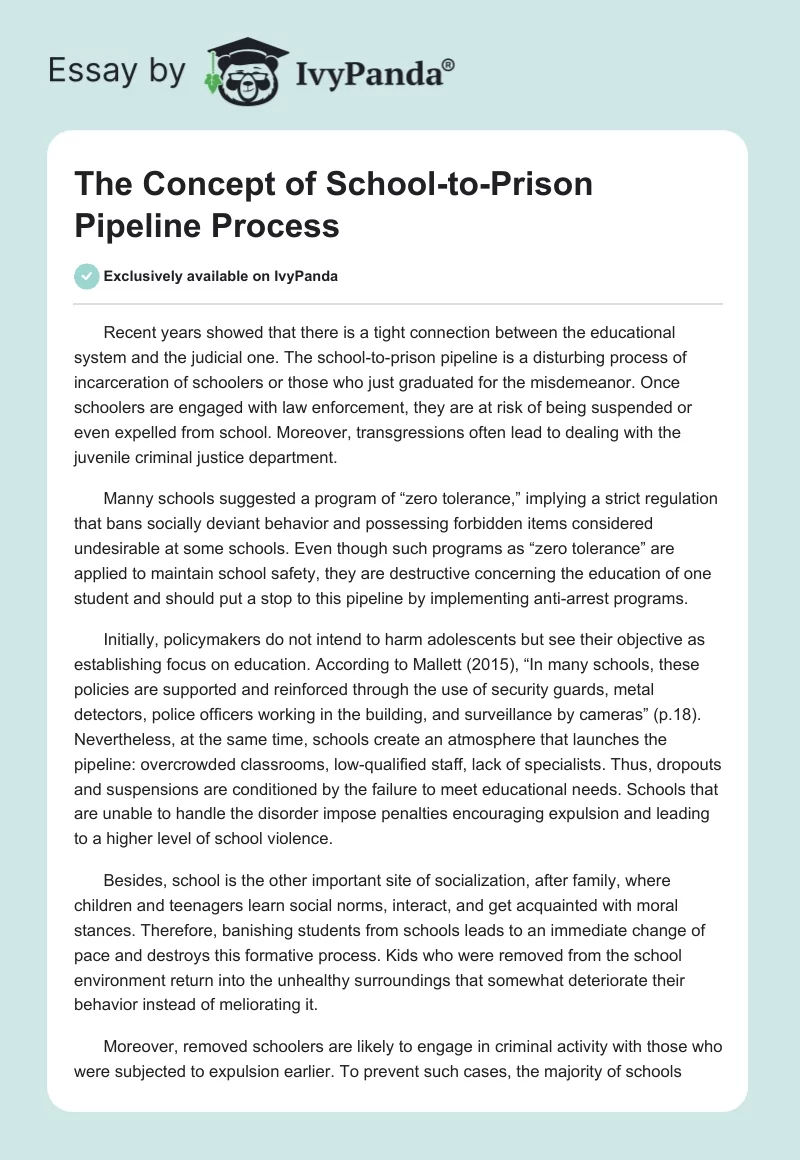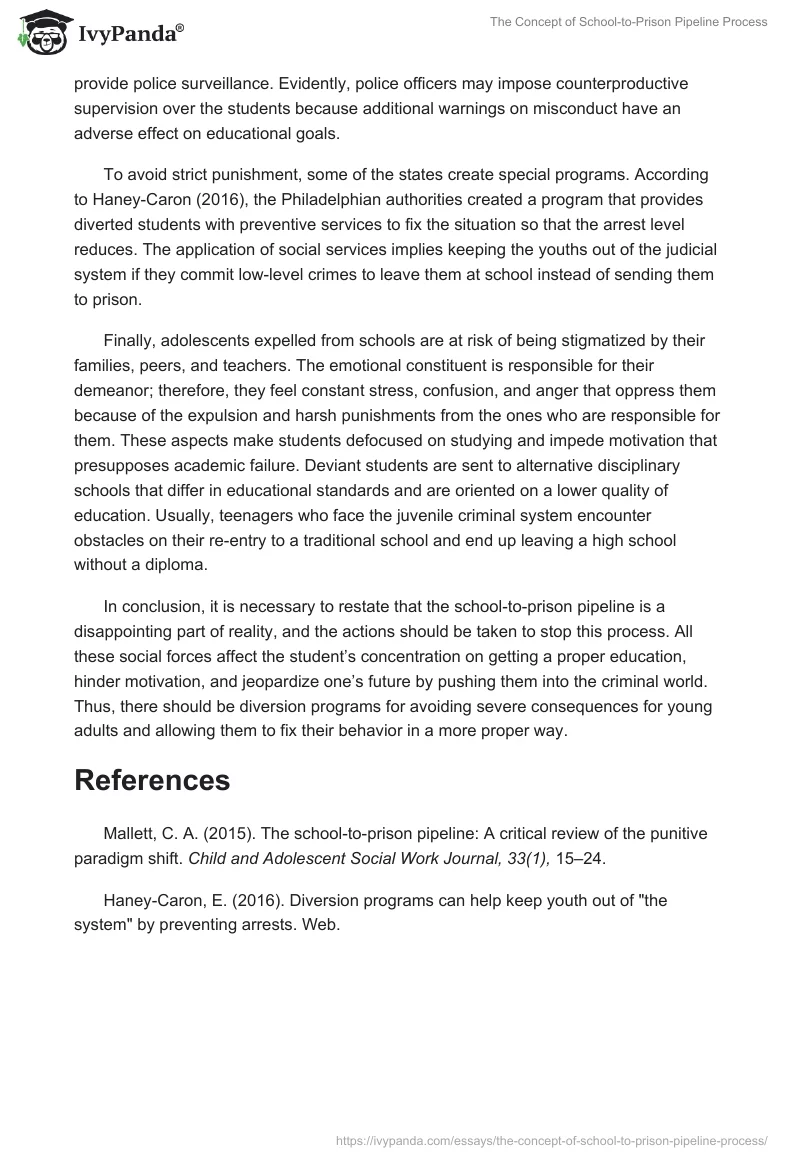Recent years showed that there is a tight connection between the educational system and the judicial one. The school-to-prison pipeline is a disturbing process of incarceration of schoolers or those who just graduated for the misdemeanor. Once schoolers are engaged with law enforcement, they are at risk of being suspended or even expelled from school. Moreover, transgressions often lead to dealing with the juvenile criminal justice department.
Manny schools suggested a program of “zero tolerance,” implying a strict regulation that bans socially deviant behavior and possessing forbidden items considered undesirable at some schools. Even though such programs as “zero tolerance” are applied to maintain school safety, they are destructive concerning the education of one student and should put a stop to this pipeline by implementing anti-arrest programs.
Initially, policymakers do not intend to harm adolescents but see their objective as establishing focus on education. According to Mallett (2015), “In many schools, these policies are supported and reinforced through the use of security guards, metal detectors, police officers working in the building, and surveillance by cameras” (p.18). Nevertheless, at the same time, schools create an atmosphere that launches the pipeline: overcrowded classrooms, low-qualified staff, lack of specialists. Thus, dropouts and suspensions are conditioned by the failure to meet educational needs. Schools that are unable to handle the disorder impose penalties encouraging expulsion and leading to a higher level of school violence.
Besides, school is the other important site of socialization, after family, where children and teenagers learn social norms, interact, and get acquainted with moral stances. Therefore, banishing students from schools leads to an immediate change of pace and destroys this formative process. Kids who were removed from the school environment return into the unhealthy surroundings that somewhat deteriorate their behavior instead of meliorating it.
Moreover, removed schoolers are likely to engage in criminal activity with those who were subjected to expulsion earlier. To prevent such cases, the majority of schools provide police surveillance. Evidently, police officers may impose counterproductive supervision over the students because additional warnings on misconduct have an adverse effect on educational goals.
To avoid strict punishment, some of the states create special programs. According to Haney-Caron (2016), the Philadelphian authorities created a program that provides diverted students with preventive services to fix the situation so that the arrest level reduces. The application of social services implies keeping the youths out of the judicial system if they commit low-level crimes to leave them at school instead of sending them to prison.
Finally, adolescents expelled from schools are at risk of being stigmatized by their families, peers, and teachers. The emotional constituent is responsible for their demeanor; therefore, they feel constant stress, confusion, and anger that oppress them because of the expulsion and harsh punishments from the ones who are responsible for them. These aspects make students defocused on studying and impede motivation that presupposes academic failure. Deviant students are sent to alternative disciplinary schools that differ in educational standards and are oriented on a lower quality of education. Usually, teenagers who face the juvenile criminal system encounter obstacles on their re-entry to a traditional school and end up leaving a high school without a diploma.
In conclusion, it is necessary to restate that the school-to-prison pipeline is a disappointing part of reality, and the actions should be taken to stop this process. All these social forces affect the student’s concentration on getting a proper education, hinder motivation, and jeopardize one’s future by pushing them into the criminal world. Thus, there should be diversion programs for avoiding severe consequences for young adults and allowing them to fix their behavior in a more proper way.
References
Mallett, C. A. (2015). The school-to-prison pipeline: A critical review of the punitive paradigm shift. Child and Adolescent Social Work Journal, 33(1), 15–24.
Haney-Caron, E. (2016). Diversion programs can help keep youth out of “the system” by preventing arrests. Web.


